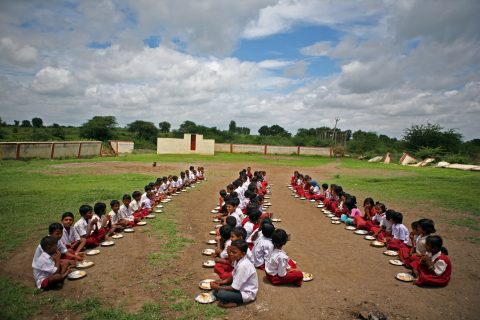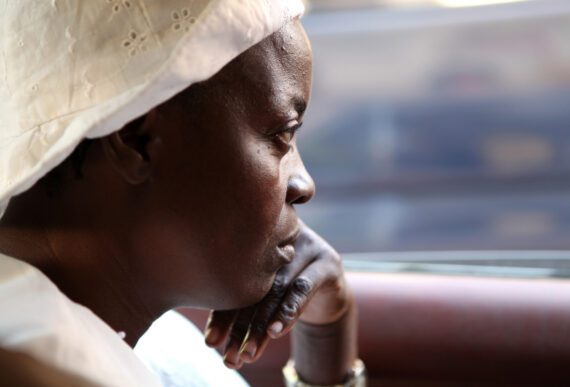By Faustine Wabwire, Bread for the World Institute
In September 2015, the global community adopted a new framework for global development for the next fifteen years: the Sustainable Development Goals (SDGs). SDG 2, reaching zero hunger and ending all forms of malnutrition, is not only possible with the right kind of investments, but it is essential to achieving the other sixteen goals.
As the world’s attention and resources begin to focus on this new set of goals, and in order to achieve such ambitious aspirations for a better world, the time is ripe for a holistic approach to ending hunger. This is especially critical given the increasingly complex global realities—protracted conflicts and a growing population, alongside shrinking resources such as land and water due to climate change, high youth unemployment, rural-urban migration, and more. The global community—governments, including the private sector, and civil society—must work together to galvanize financial support and political will for a new, bold, and multi-faceted approach.
Over the past two decades, we have learned that efforts to make continued progress against hunger must do two things: significantly increase investments in rural productive sectors, particularly smallholder farmers, and combine agricultural development with social protection. Evidence suggests that providing regular and predictable cash transfers to poor households, for example, not only plays a critical role in filling immediate food gaps, but can also help improve the lives and livelihoods of poor communities in the longer term by strengthening their ability to cope with shocks such as high food prices, droughts, and other stresses.
Social protection programs include such initiatives as school feeding programs, cash transfers, and public works and infrastructure projects. They provide a much-needed cushion against severe shocks that devastate livelihoods and economies. Furthermore, if well-integrated into broader agricultural programs, these programs enable communities to invest in profitable economic activities that in turn lead to asset building and broader national economic gains. For example, better nutrition outcomes raise people’s productivity and consequently their incomes, both in the short and long term.
Evidence from a range of countries—large and small, middle-income and low-income—indicates that social protection provides a powerful opportunity to bolster human and institutional capacities that are so essential to ending hunger and poverty. In January, Bread for the World Institute cosponsored a roundtable on how best to strengthen social protection efforts, particularly in the agriculture sector. Senior administration officials highlighted opportunities for the U.S. government to participate in these efforts.
In Mexico, for example, the PROSPERA program (previously known as Oportunidades) now reaches 32.9 million people. It is credited with reducing poverty by 10 percent and the poverty gap by 30 percent in a period of only two years. The program recently expanded to include promoting beneficiaries’ access to higher education and formal employment. Additionally, Prospera facilitates access to financial services, which contributes to the social inclusion of the country’s poorest citizens. One of Prospera’s outstanding impacts is a decrease of nearly 12 percentage points nationwide in the incidence of anemia among children younger than two.
In Ethiopia, the Productive Safety Net Program (PSNP) has helped to significantly reduce hunger while also enabling the completion of many large-scale infrastructure programs and agricultural projects. These public works projects—for example, irrigation canals—are helping to prevent deaths from hunger during the severe drought from which the country is currently suffering.
These examples illustrate that the right mix of interventions can be game changers toward achieving zero hunger by 2030. These include targeted pro-poor policies that have prominent social protection components; investments in rural productive sectors, particularly agriculture; strong political will from both the global community and national governments; and strengthening the capacity of local institutions. Nutrition programs, for example, not only prevent human suffering—an essential goal in its own right—but quickly pay for themselves. Thus, a tight budget climate should lead development partners to press forward, not back off, in strengthening social protection, local institutional capacity, and rural economies.
Ending hunger is more complicated than cutting hunger in half. Yet before the Millennium Development Goals (MDGs) era, 2000-2015, many experts thought that the MDG target of cutting hunger in half was an impossibly lofty ambition. It turned out to be a goal that the world very nearly achieved. This is how we know that ending hunger and malnutrition by 2030 can be done. It will require coordinated efforts from a variety of development partners—high-income and low-income governments, multilateral agencies, the private sector, civil society, community groups, and individuals. But it can be done.
Faustine Wabwire is senior foreign assistance policy analyst at Bread for the World Institute. This article first appeared in The Chicago Council on Global Affairs website.



